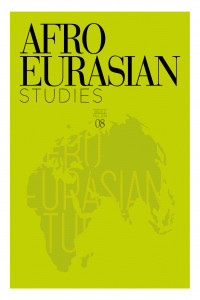Searching for the Nexus between Money, Deposits, and Loans (Financing) in Malaysian and Turkish Islamic and Conventional Banking: A Comparative Analysis (2007-2013)
Searching for the Nexus between Money, Deposits, and Loans (Financing) in Malaysian and Turkish Islamic and Conventional Banking: A Comparative Analysis (2007-2013)
This study attempts to analyse the causal relations between bank money and credit channel for Islamic and conventional banking in Malaysia and Turkey on a comparative level. Monthly data for the period from January 2007 to May 2013 is used for the Granger causality analysis. The findings show that in the case of bank money, the causality is from deposits to loans (financing) for Islamic banks in both countries. In addition, although causality is determined from money supply to loans in conventional banking in both countries, the same causality in Islamic banking is only identified in the case of Malaysia. Furthermore, in the causal relationship between bank deposits and money supply, causality is only found from money supply to deposits in both banking types in the case of Turkey. These results suggest that the credit channel may only operate over commercial banking in both countries and that it also only works over Islamic banking in Malaysia
___
- Asutay, M., 2010. Islamic Banking and Finance and Its Role in the GCC-EU Relationship: Principles, Developments and the Bridge Role of Islamic Finance. In: C. Koch and L. Stenberg, eds., The EU and the GCC: Challenges and Prospects under the Swedish EU Presidency. Dubai, UAE: Gulf Research Center. pp. 35-58.
- Asutay, M., 2013. Developments in Islamic Banking in Turkey: Emergence, Regulation and Performance. In: V. Cattelan, ed., Islamic Finance in Europe: Towards a Plural Financial System. Cheltenham: Edward Elgar. pp. 213-227.
- Aydın, Burcu and Igan, Deniz, 2010. Bank Lending in Turkey: Effects of Monetary and Fiscal Policies. IMF Working Paper, No: WP/10/233. Washington, D.C.: IMF.
- Başçı, Erdem; Özel, Özgür and Sarıkaya, Çağrı, 2007. The Monetary Transmission Mechanism in Turkey: New Developments. The Central Bank of the Republic of Turkey Research and Monetary Policy Department Working Paper, No: 07/04. Ankara: Turkey.
- Bernanke, Ben S. and Blinder, Alan S., 1992. The Federal Funds Rate and The Channels of Monetary Transmission. The American Economic Review, 82(4), pp. 901-921.
- Bernanke, Ben S. and Gertler, M., 1995. Inside the Black Box: The Credit Channel of Monetary Policy Transmission. The Journal of Economic Perspectives, 9(4), pp. 27-48.
- Bernanke, Ben S.; Gertler, M. and Gilchrist, S., 1996. The Financial Accelerator and Flight to Quality. The Review Economics and Statistic, 78(1), pp. 1-15.
- Calomiris, Charles W. and Hubbard, R. G., 1990. Firm Heterogeneity, Internal Finance and Credit Rationing. The Economic Journal, 100(March), pp. 90-104.
- Çavuşoğlu, A. Tarkan, 2002. Credit Transmission Mechanism in Turkey: An Empirical Investigation. ERC Working Papers in Economics No. 02/03.
- Chapra, M. U., 1985. Towards a Just Monetary System: A Discussion of Money, Banking, and Monetary Policy in the Light of Islamic Teachings. Leicester: Islamic Foundation.
- Fidlizan, M., Sulaiman, M. A., Yahya Mohd, H. M. and Abdul Razak, A., 2012. Does Islamic Interbank Rate Influence Bank Characteristics and Economic Cycle in Malaysian Monetary Transmission?. Asian Journal of Finance and Accounting, 4(2), pp.131-144.
- Ghazali, Noor Azlan and Rahman, Aisyah Abdul, 2005. The Transmission Mechanism of Monetary Policy in Malaysia: Through Bank Loans or Deposits?. Journal of Economics and Management, 13 (1), pp. 1-18.
- Granger, C. W. J., 1969. Investigating Causal Relations by Econometric Models and Cross-Spectral Methods. Econometrica, 37 (3), pp. 424-38.
- Granger, C. W. J., 1980. Testing for Causality: A Personal Viewpoint. Journal of Economic Dynamics and Control, 2 (1), pp. 329-352.
- Hasan, Zubair, 2008. Credit Creation and Control: An Unresolved Issue in Islamic Banking. International Journal of Islamic Middle Eastern finance and Management, 1(1), pp. 69-81.
- Hasan, Zubair, 2011. Money Creation and Control from an Islamic Perspective. Review of Islamic Economics, 15 (1), pp. 93-111.
- Hasin, Zamrah and Majid, M. Shabri Abd., 2011. The Importance of the Islamic Banks in the Monetary Transmission Mechanism in Malaysia. 8th International Conference on Islamic Economics and Finance. Doha, Qatar, December 201. Qatar: Qatar Faculty of Islamic Studies.
- Hubbard, R. Glenn, 1998. Capital-Market Imperfections and Investment. Journal of Economic Literature, 36(1), pp. 193-225.
- Kashyp, Anil K. and Stein, Jeremy C., 1993. Monetary Policy and Bank Lending. NBER Working Paper Series, No: 4317. New York: NBER.
- Kashyap, Anil K., Stein J. C., and Wilcox, D. W., 1993. Monetary Policy and Credit Conditions: Evidence from the Composition of External Finance. American Economic Review, 83(1), pp. 78-98.
- Kassim, Salina and Majid, M. Shabri Abd., 2009. The Role of Bank Loans and Deposits in the Monetary Transmission Mechanism in Malaysia. International Journal of Banking and Finance, 6(2), pp. 37-59.
- Mishkin, F., 1995. Symposium on the Monetary Transmission Mechanism. Journal of Economic Perspectives, 9(4), pp. 3-10.
- Said, Fathin. F. and Ismail, Abd. G., 2007. How Does the Changes in Monetary Policy Affect Lending Behavior of Islamic Banking in Malaysia?. Jurnal Ekonomi Pembangunan, 12(3), pp. 163-177.
- Sengonul, A. and Thorbecke, W., 2005. The Effect of Monetary Policy on Bank Lending in Turkey. Applied Financial Economics, 15(13), pp.931–934.
- ISSN: 2147-110X
- Yayın Aralığı: Yıllık
- Başlangıç: 2012
- Yayıncı: Musiad (Independent Industrialists and Businessmen's Association)
Sayıdaki Diğer Makaleler
Liquidity Risk Management in Islamic Banks: A Survey
Revisiting Takaful Insurance: A Survey on Functions and Dominant Models
Islamic Liquidity Management: The Way Forward
Islamic Finance as a Means to Make Istanbul an International Financial Centre
Fatih KANSOY, Hasan Huseyin KARLİOGLU
Is Development Accumulation of Wealth? Islamic Views
Islamic Microfinance as an Alternative for Poverty Alleviation: A Survey
Credit Risk Management in Indonesian Islamic Banking
